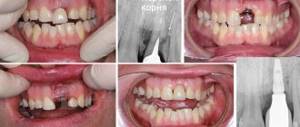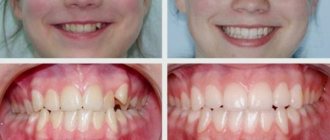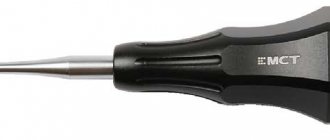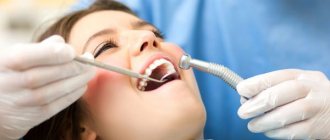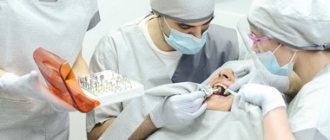Indications for tooth extraction
Extirpation is done when therapeutic treatment is impossible or before prosthetics. It can be planned or emergency. It is carried out using a simple or complex method. In the first case, the dental unit is removed from the socket using forceps, and in the second, dissection of the gums, alveolar bone, and sawing of the roots into fragments may be required.
Indications for emergency surgery:
- the presence of purulent inflammation, fistula, cyst;
- acute pain that is not relieved by medication;
- fracture of the crown, root.
Planned extraction is done if:
- advanced caries, if the area of the carious cavity of the crown is more than 70 percent, the pathology has spread to the root part;
- pulpitis in a complex root system, when it is impossible to properly clean the canals (usually in a figure eight);
- periodontitis with stage 3 or 4 mobility;
- third molars that interfere with neighboring ones cause changes in bite, facial asymmetry, neurological pain, pericoronitis;
- supernumerary, dystopic, impacted teeth, which cause various disorders in the dental system;
- orthodontic indications for prosthetics, installation of braces.
Experienced dentists always strive to preserve the integrity of the dentition, so radical measures are usually taken in the absence of a positive result of therapeutic treatment. After the procedure and recovery period, acute pain goes away, but chewing function worsens when removing molars or aesthetics when extracting incisors or canines.
Reviews
In dental treatment, the result largely depends on the individual characteristics of the person.
The opinion of people who have experienced this technology is of great importance at the present time.
People's experience helps them make a choice in favor of one method or another. We invite you to share your experience or advice regarding orthodontic teeth traction in the comments to this article.
If you find an error, please select a piece of text and press Ctrl+Enter.
Tags: bite correction
Did you like the article? stay tuned
No comments yet
Anesthesia for tooth extraction
There are several types of pain relief:
- local anesthetics that are injected into the gums;
- drugs for general anesthesia injected into a vein;
- inhalation anesthesia;
- nitrous oxide sedation.
The choice of method depends on what kind of operation is being performed: simple or complex. Removing the front teeth is considered the easiest. They have one root and are easily dislocated with forceps. For pain relief, a simple “freezing” with a local anesthetic is sufficient.
Removing lower wisdom teeth is the most difficult procedure, especially if there are abnormalities in growth and location. It will require cutting the gums, cutting off part of the bone, sawing and step-by-step removal of root fragments. The operation can last more than 1 hour, so it is often performed under anesthesia.
Sedation with nitrous oxide does not exclude local anesthesia. It relaxes well, puts the patient into a state of half-asleep, and reduces fear. Often used in pediatric dentistry to remove baby teeth.
Drugs injected into a vein completely turn off consciousness for a certain period of time. The duration of anesthesia is adjusted by the dosage of the medication.
Inhalation anesthesia allows you to control the dose of the drug directly during the procedure. This ensures high-quality and safe general anesthesia and minimizes the risk of side effects.
Advantages and disadvantages of technology
Like any other method of dental treatment, the traction procedure has its advantages and disadvantages.
Benefits include:
- It is possible to avoid complex surgical intervention;
- The aesthetic appearance of the fabric is preserved;
- Minimum pain;
- Eliminates replacement of a healthy root with an implant;
- Suitable for children;
- It costs less than making bridges.
Disadvantages can be considered:
- Risk of developing gum recession at the site of the impacted unit;
- Risk of excessive root exposure;
- Long period of traction;
- Careful oral hygiene is required several times a day.
Stages of the procedure
Simple extirpation is carried out using forceps, consisting of cheeks, a handle, and a lock. It is performed if the coronal part is well preserved and there are no various complications. Incisors and canines on the upper jaw are removed with straight forceps, on the lower jaw - curved at an angle of 90 degrees. S-shaped instruments are used to extract premolars and molars.
Removing an upper wisdom tooth is easier than on the lower jaw, since it has an even, small root, so a simple operation is performed if there are no complications. The lower jaw bone is denser and more massive, and the root part of the figure eight is complex.
A simple extraction consists of several steps:
- local anesthesia;
- antiseptic treatment;
- application of forceps followed by advancement of the cheeks under the gums and fixation;
- rocking, dislocation and extraction of a dental unit from the socket.
Complex extirpation requires the use of several different instruments, takes a longer time, injures nearby tissues, is dangerous for complications, and the rehabilitation process lasts longer. Pain relief during tooth extraction, especially eights, can be general. The surgeon uses a scalpel or laser, drill, elevator, excavator, and other instruments.
Step-by-step complex removal:
- local or general anesthesia;
- antiseptic treatment;
- dissection of the gums, separation of the flap from dental and bone tissues;
- if necessary, drilling or cutting off part of the bone, dividing the root into several fragments;
- extraction of a dental unit in whole or in parts;
- bleeding stop;
- application of antibacterial and anti-inflammatory drugs;
- suturing the gum.
To stitch soft tissues, self-absorbing or non-absorbable threads are used, which are removed after 7-10 days.
Features of the technique
The traction procedure allows you to correct the position of the tooth in the vertical or horizontal plane, restoring the natural anatomical position. This is due to the specific structure of the root area, as well as the effect of the targeted application of force. Dentists performing the operation create pressure zones, due to which histological changes occur in the structure of the jaw apparatus.
It is important to note that traction is not a one-step procedure and is carried out in several sessions. The duration of restoration of the natural anatomical position reaches several months, but in rare cases it can be significantly reduced. A factor influencing the rate of correction is the patient’s age.
Possible complications
When using an elevator, an adjacent molar or premolar may be displaced or even broken. In the upper jaw, it is possible to push a fragment into the maxillary sinus. Fractures of the lower jaw are very rare.
Immediately after surgery, swelling occurs, and after the anesthetic wears off, pain occurs. Such phenomena disappear within one or several days, depending on the complexity of the procedure performed. Temporary numbness of soft tissues in the operated area, increased temperature, and bleeding are possible.
Pus in the hole after tooth extraction appears due to alveolitis. When a blood clot, which protects against the entry of bacteria and food, falls out of the socket, the pain intensifies and inflammation develops. In this case, you need to contact the doctor who performed the operation.
Expected effect
The process of traction of the impacted unit takes from 12 to 15 months; it will take at least a week to remove the defect site, but whether it is worth it is, of course, up to the patients to decide.
The release time is also influenced by the patient’s age; the older you are, the longer it will take for the unit to reach the desired level. In children, the effect is achieved within 6-8 months. The complexity of the defect and the general condition of the oral cavity also have an impact.
The expected result of treatment is advancement into a normal physiological position in the case of an impacted tooth or extension of a sufficient part of the root for restoration in the case of a broken tooth.
The lifespan of a restored or elongated tooth depends on its initial condition.
Sanitation of the oral cavity during the preparation period and timely treatment of emerging pathologies will increase the service life of the tooth.
With regular visits to the dentist and careful oral hygiene, the restored tooth will be no different from the rest and will last a long time.
Care instructions
Before the socket is tightened, you should not overheat the body, drink or eat hot or cold drinks, food, or chew on the operated side. You should not smoke, as nicotine constricts blood vessels and impairs wound healing. It is forbidden to lick a blood clot from the socket.
Antibiotics are prescribed for tooth extraction if the procedure was complicated. They are necessary to prevent tissue infection and the development of inflammatory processes. For the same reason, it is recommended to rinse your mouth with antiseptics. In this case, there is no need to rinse intensively, since it is possible to wash out the blood clot from the socket. Analgesics can be used to relieve pain.
Sections we recommend
Look at the sections to learn about tooth extraction methods:
- Removal of a tooth
- Wisdom tooth removal
- Impacted tooth extraction
References for the article:
- E.A. Bazlikyan “Proaedeutic dentistry” Textbook - 2008
- Yu.V. Kozlova “Piezosurgery in dentistry” Article. — 2016
Author of the article: Mariam Arutyunovna Harutyunyan
Copywriter of the information portal Stom-Firms.ru. Specialization in translations and original articles on medicine and dentistry.
FAQ
• Is it painful to remove a tooth?
Painless tooth extraction using local anesthetics is carried out by absolutely all dental clinics. But if “freezing” is not enough, then it is better to go to a private clinic that provides all types of pain relief.
• How do you know when a tooth needs to be removed?
If it is very loose or the crown is completely destroyed, then most likely it will be removed. In other cases, accurate diagnosis is necessary.
• Is it possible to have a tooth removed if you have a cold?
Surgical intervention is unacceptable in the presence of an acute infection, including acute respiratory infections or influenza. This is due to the high probability of infection of injured tissues.
• Is it possible to remove a tooth if you have sinusitis?
The operation is not performed during exacerbation of the disease.
How is surgery performed to expose the crown of an impacted tooth?
- As a preliminary stage, preparation for the operation is carried out. The patient undergoes professional hygiene and sanitation to reduce the amount of infection in the oral cavity and speed up postoperative healing.
- The operation to expose an impacted tooth is performed under local infiltration anesthesia and is considered a fairly serious surgical intervention.
The operation to expose the crown of an impacted tooth and install an orthodontic element on it can be carried out according to 2 schemes:
I Delayed bracket installation.
- The mucous membrane in the projection of the crown of the impacted tooth is excised, the entire crown of the tooth is exposed, and a special tampon is installed in the wound.
- After 2-3 days, a button or bracket is installed on the crown of the exposed tooth, which is tied to the orthodontic arch and traction begins.
II Bracket installation during surgery
- The dentist-surgeon peels off a small mucoperiosteal flap and exposes part of the crown of the impacted tooth, onto which the locking element is immediately fixed.
- The bracket is tied to an orthodontic arch or additional devices.
- After installing the orthodontic element, the flap of tissue is placed in place and the wound is sutured.
The disadvantage of this method is that in this case, repeated surgical intervention is possible if the bracket on the tooth comes off.
After surgery, the patient is prescribed antibiotics and antiseptic rinses, if necessary, to speed up healing. Light, non-traumatic food is recommended.
Get a consultation
We will answer all your questions before visiting the clinic!
+7
Online registration
Preparation of plasma membrane
The membrane is made in the morning or 4 hours after eating (water can be drunk, even necessary). The procedure takes about half an hour.
- In the treatment room, blood is taken from a vein in the patient's elbow.
- The biomaterial is placed in a specialized apparatus, where it is centrifuged to separate the plasma.
- In laboratory conditions, doctors obtain the necessary plasma and saturate it with anticoagulants.
The procedure is quite quick and painless. To minimize risks, you should carefully approach the search for a good clinic and an experienced doctor. Implantmaster employs highly qualified specialists who regularly improve their skills and knowledge.
Removal using a piezo scalpel with a periotome
At the Implantmaster clinic, all surgical interventions are performed using anesthesia. Our specialists perform atraumatic removal of any teeth using ultrasound.
The dentist-surgeon, first of all, uses a periotome to separate the adjacent gum from the tooth on all sides. To preserve the bone septum between the roots, the doctor separates the roots from each other. An innovative piezo scalpel - the VarioSurg LED ultrasonic surgical system - separates the roots from the coronal part and their subsequent segmentation. Removal is as safe and painless as possible. Even the most difficult operations are carried out without further complications.
Application of blood plasma membrane
The use of platelet membranes containing cell growth factors accelerates tissue regeneration and healing. During surgery, the membrane covers the defect, implanted bone material or artificial root. Sometimes a fibrin clot is combined with the patient's bone material and introduced into the defect area. Afterwards, suture material is applied. If the membrane was installed to prevent inflammation, then sutures are not applied. It is not advisable to rinse your mouth during the first 3 days.
The introduction of a platelet membrane naturally activates cellular growth factors of the jaw bone and periodontal tissues, increasing the rate of recovery. Regeneration and acceptance of implants or bone material by the body is much faster, and the likelihood of inflammation is significantly minimized.
Blood plasma membranes have a positive effect on:
- increase in the rate of cellular growth factor in the bone after implantation;
- absence of allergies that could occur when interacting with foreign materials;
- accelerated gum recovery after implantation or plastic surgery;
- prevention of inflammation around the implant;
- reduction of swelling and pain after surgical procedures;
- optimal tightening of the socket after tooth extraction;
- minimizing inflammation during gingival curettage and cleaning periodontal pockets.



